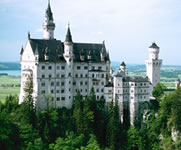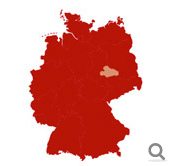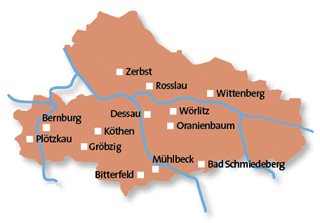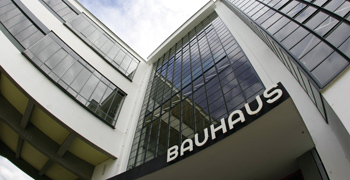
Historical Towns
- Historical towns in Brandenburg
- Cathedral Towns and Cities in Saxony-Anhalt
- The innovative Anhalt-Wittenberg Region
- Enchanting towns in the Harz
- The beautiful towns and cities in Saxony
- Towns and cities of culture in Thuringia
- Beautiful towns of Franconia
- East Bavarian traditional towns
- Alpine towns in the Allg�u
- The eastern Akpine Foothills and their towns
- Towns and villages in the western foothills of the Alps
- Mediterranean towns on Lake Constance
- Towns in the Swabian Alb
- Unspoilt towns in the Black Forest
- Towns for refined tastes in the Heilbronner Land
- Towns in the Odenwald
- Wine towns in Rheinhessen
- Saarland, a region of contrasts
- Romantic towns in the Hunsr�ck and Nahe Regions
- Idyllic towns and villages in the Moselle Region
- The Ahr Rhine Eifel holiday region
- Wine towns on the Romantic Rhine
- Modern towns and cities in the Bergisches Land Region
- The Lahn Valley and its fairytale towns
- Historical towns in Kurhessisches Bergland
- Sauerland's scenic towns
- Fairytale towns in the Weserbergland Hills
- Majestic towns in the M�nsterland Region
- The nine stars of Lower Saxony
- North and East Frisian Islands
- Vibrant Schleswig-Holstein
- Maritime towns along Mecklenburg's Baltic Coast
- Historical Hanseatic Towns
- Germany's Baltic Sea Islands
- The Mecklenburg Lakes
Contact and information
Small place, big influence where Martin Luther's spirit is alive and well

Dessau
The door to modernism was swung open by the members of the Bauhaus, the 20th century's most influential architecture and design school, which moved to Dessau after being expelled from Weimar where it was founded. In 1925 Walter Gropius, the Bauhaus director, his masters and his students stood on the threshold of seven productive years in the town. Gropius designed the Dessau master houses and the college building, which went on to set the tone for modern industrial architecture. Now a UNESCO World Heritage site, they have been painstakingly restored in recent years.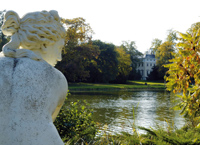
Garden Kingdom of Dessau-Wörlitz
Prince Leopold III Friedrich Franz von Anhalt- Dessau was a man with Enlightenment ideas, which he had turned into reality as an English landscaped garden. The Garden Kingdom of Dessau-Wörlitz not only embodied his economic, agricultural and aesthetic ideas, it was also designed to educate by synthesising the useful and the beautiful. Today this area covering 142 square kilometres between Dessau and Wittenberg is one of the finest garden landscapes in Europe. It incorporates several palaces, parks and churches including Georgium Palace, home to the Anhalt Picture Gallery, the Dutch baroque Oranienbaum Palace and Wörlitz House, Germany's first neo-classical building.Wittenberg
The small town of Wittenberg provided the spark for the greatest social upheaval in the early modern age. When Martin Luther nailed his 95 theses to the door of Wittenberg castle church, he triggered that great renewal movement, the Reformation. Like Luther, Philipp Melanchthon, the Reformation's `number two', studied and debated at Wittenberg University. Another man who left his mark on Wittenberg was Lucas Cranach, the painter of the Reformation, who had his studio in the town. The Luther memorials his house, the municipal church and the castle church have been UNESCO World Heritage sites since 1996.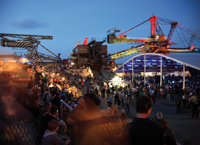
Ferropolis
7,000 tonnes of iron on a peninsula in Lake Gremmin symbolise the most dramatic landscape transformation ever undertaken in central Germany. Ferropolis, the city of iron, comprises five gargantuan, bucketwheel excavators that spent decades excavating lignite (brown coal) in this area near Dessau. The mine's headquarters were on the site of the present-day lake until 1991. These gigantic machines 30 metres tall and 130 metres long were saved from the scrapyard by former miners and a number of visionaries, who used them as the focus for Ferropolis, a breathtaking playground for adults and children with a fantastic events programme.Köthen
Johann Sebastian Bach spent six years as kapellmeister at the royal court in Köthen, during which time he composed a large number of secular compositions including the Brandenburg Concertos. In the Ludwigsbau wing at Köthen Castle, various rooms devoted to Bach, a hall of mirrors and the castle chapel are open to visitors. Anhalt- Wittenberg's towns have many fascinating churches and abbeys dating from the Middle Ages.Anhalt-Wittenberg cuisine
Asparagus has been grown in the Fläming region for as long as anyone can remember. To enjoy this delicacy at its freshest, visit the Zerbst asparagus festival at the beginning of May, when it features on the menu at many restaurants. Dumplings are another local speciality, often served as a yeast or potato topping on a stew, which keeps in the flavour as it cooks in the oven. Sweet and sour dishes are also popular here, so if you fancy something a bit different, try one of the Dessau area's specialities: rice pudding with sugar, cinnamon and bratwurst.Travel Planner
Select an option...
Romance and charm
Many famous figures in the history of music, including Johann Sebastian Bach, lived and worked in Anhalt-Wittenberg. The Bach Festival in Köthen, which is held in even-numbered years, celebrates this great composer.
Food and drink
The Plum Cake Festival in Plötzkau takes place every September. After the main fruit harvest, the orchards were traditionally opened to gleaners. Gathering plums was especially popular, as was the baking of plum cakes.
History and tradition
Zerbst Palace Garden the palace was once the main residence of the royal house of Anhalt- Zerbst. It was originally a triple-winged building, but the ruins of the east wing are all that remain today. Not built until 1745, this section had the finest interior and was the latest to be added.
Nature and scenery
The Middle Elbe biosphere reserve between Dessau and Oranienbaum has recorded more than 1,000 different plants. Its fauna is equally diverse the Elbe beaver is one of many species to have found refuge in this protected environment.




